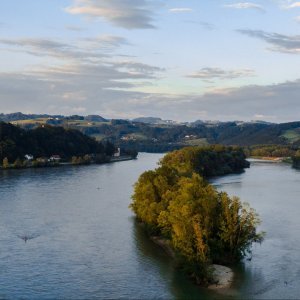
The Danube Floodplain was launched to examine how to reduce flood risk through the restoration of floodplains in the Danube River Basin. The project comes to an end this November, so the project partners presented the results at a closing conference on 3th and 4th November 2021.
In the last decades, heavy alteration of wetland ecosystems characterized the land use. Since 1970, 90 % of the global wetlands have disappeared together with 84 % of vertebrate species. Along the Danube 70 % of the floodplains have been separated from rivers and on the remaining ones there is an extreme pressure to provide a variety of services. Floodplains, among others, play a determining role in mitigation of more frequent climate extremities such as floods or droughts. Reconnection and restoration of floodplain areas and initiating alternative land uses is an integrative solution to both issues. The more floodplains are restored, the bigger is the mitigation impact on river basin level.
The Danube Floodplain project (Reducing the flood risk through floodplain restoration along the Danube River and tributaries) started on 1 June 2018 and will run until 30 November 2021. The project is supported by Interreg Europe through the Danube Transnational Programme (DTP), and is implemented by 18 partners and 4 associated strategic partners across ten countries sharing the Danube River Basin (Austria, Bulgaria, Croatia, Czech Republic, Germany, Hungary, Romania, Serbia, Slovakia and Slovenia).
The main objective of the project was to enhance transnational water management and flood risk prevention, while maximizing benefits for biodiversity and economy as well. The project aimed to improve knowledge among the Danube countries on integrative water management through restoration of floodplains, combination of grey and green infrastructure, natural retention measures, involving all related stakeholders, whose cooperation is very important in the planning and realization of such projects. The project partners selected five pilot areas along the Danube and its tributaries: Hodonín-Holič (Czech Republic and Slovakia), Kostanjevica na Krki (Slovenia), Fokorúpuszta (Hungary), Begečka Jama (Serbia) and Bistreţ (Romania) where the Danube Floodplain Evaluation Tool, developed in the project, was tested and feasibility studies, including modelling of water level projections, were prepared.
Results of the modelling showed that enhancing the area of the floodplains increases the amount of water storage capacity, while flood water levels decrease. Reconnection and reactivation of floodplains have a detectable effect on flood peak levels and on shifting the water discharge, which is a mitigation effect also on extreme floods. The restoration and management measures should be selected based on the special characteristics of the pilots and on each floodplain. The restored floodplains offer a wider range of ecosystem services not only to the public, but also to agriculture and the economic arguments of floodplain reconnection and land use change are also aspects to be considered.
The Danube Floodplain Evaluation Tool and its results were integrated into the 3rd Danube River Basin Management Plan and the 2nd Flood Risk Management Plan.
As next step, using the results of feasibility studies, further collaboration with the land owners and managers are needed to proceed: support from main land users is essential to implement successful restoration projects.
The results of the project have been published on the project’s website.
